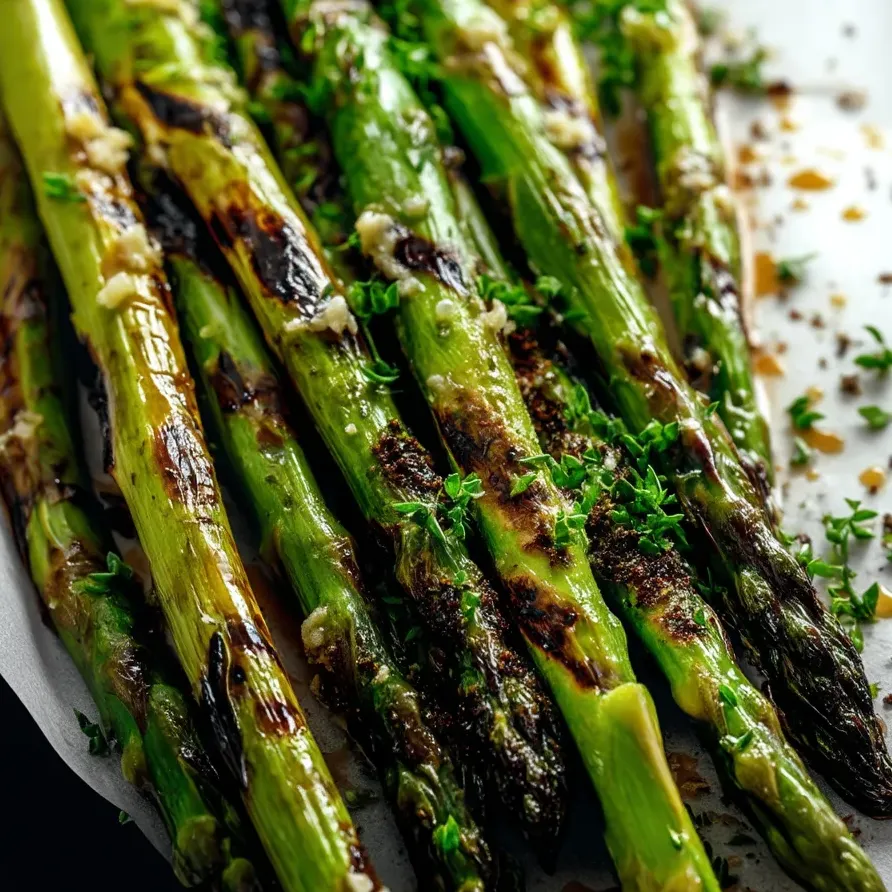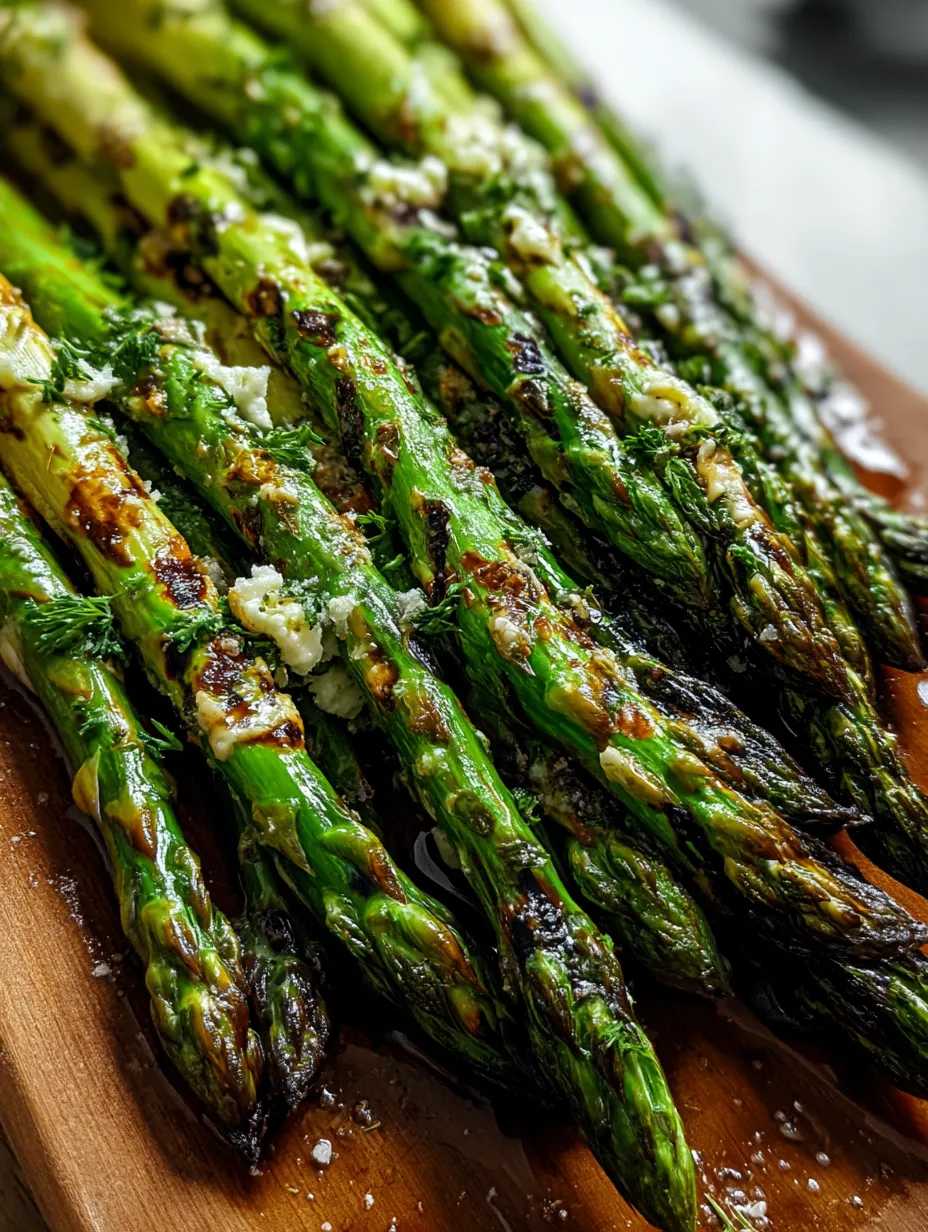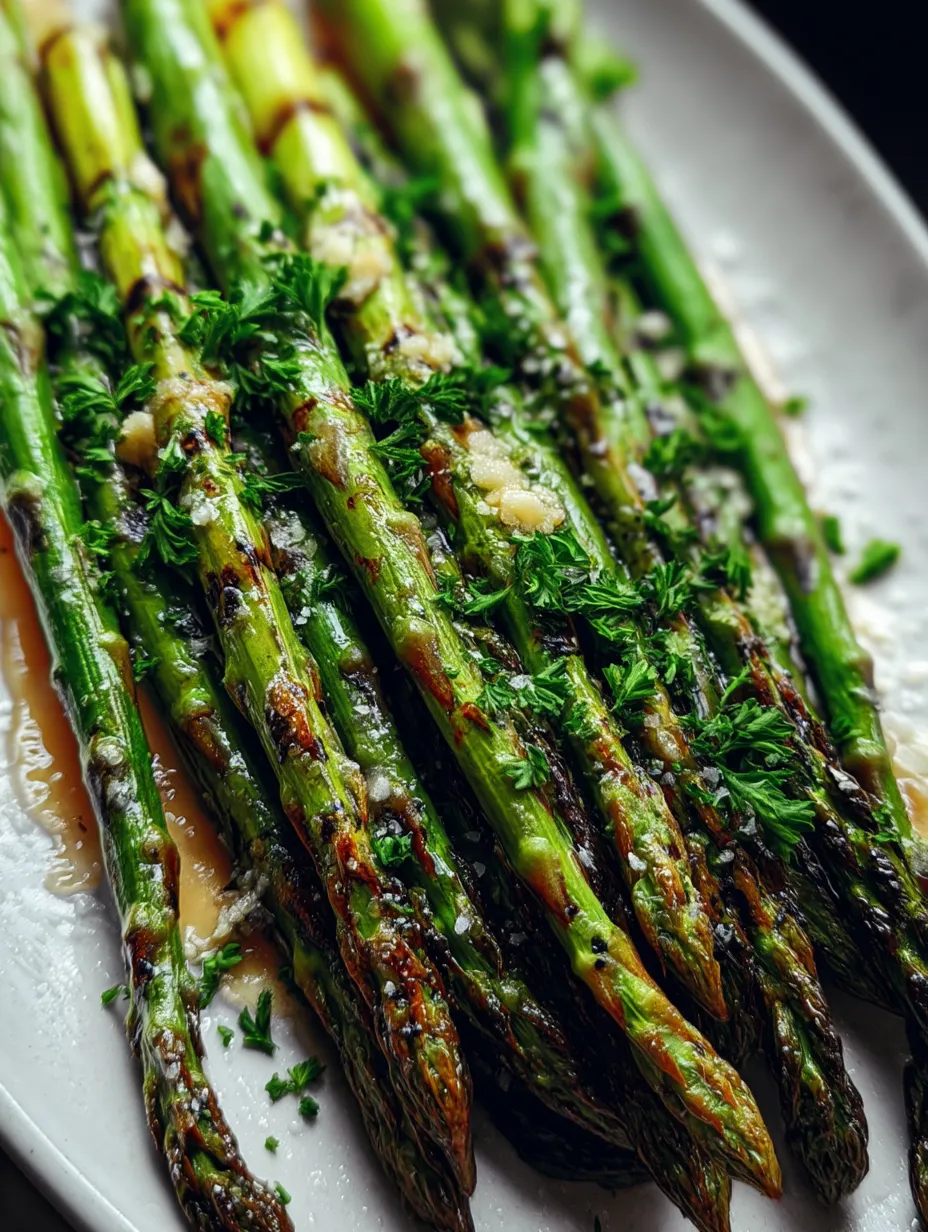 Save
Save
This easy grilled asparagus with garlic butter takes a common veggie and turns it into an unforgettable side that works with almost any main dish. The smoky flavor from grilling mixed with the rich, garlicky butter brings out the natural sweetness in asparagus, making something truly delicious.
I first tried this at a family cookout when I needed a quick veggie side without using the oven. When I saw the empty dish at night's end, I knew right away this would become one of my go-to grilling favorites.
Ingredients
- Fresh asparagus: Look for bright green stalks with tight, closed tips for the best taste and crunch
- Unsalted butter: Forms the rich base of the sauce and lets you add just the right amount of salt
- Fresh garlic: Freshly minced cloves give an amazing aroma that bottled stuff just can't match
- Salt and pepper: This simple pair brings out all the natural goodness in asparagus
- Olive oil: Keeps everything from sticking and helps create that lovely browning on the grill
Cooking Instructions
- Get the Asparagus Ready:
- Rinse asparagus spears with cold water to clean off any dirt. Grab each spear at both ends and bend until it breaks naturally—this shows where the tough woody part ends. For a nicer look, trim all spears to match the shortest one.
- Make the Garlic Butter:
- Put a small pot over medium-low heat and melt the butter completely. Once melted, throw in the minced garlic and cook for 2-3 minutes, giving it a stir now and then. You want the garlic to flavor the butter without getting brown, which would make it taste bitter. Take it off the heat when the garlic smells good and looks slightly clear.
- Set Up Your Grill:
- Heat your grill to medium-high, around 375-400°F. Make sure to clean the grates well and brush them with a little oil so the asparagus won't stick. Close the lid while you finish getting the asparagus ready.
- Add Flavor to the Asparagus:
- Put your trimmed asparagus on a baking sheet and drizzle with olive oil. Roll them around to coat each spear evenly with oil. Sprinkle plenty of salt and fresh black pepper all over.
- Grill Like a Pro:
- Lay the asparagus across the grill bars so they don't fall through. Grill with the lid open, watching carefully and turning every 1-2 minutes. You want some nice grill marks while keeping them crisp-tender, about 4-5 minutes total depending on how thick they are.
- Add the Final Touch:
- Move the hot grilled asparagus to a serving plate. Right away, pour the warm garlic butter over top so it melts into the hot asparagus. Listen for that sizzle when the butter hits—it's part of what makes this dish special.

The freshness of your asparagus really matters in this dish. During peak growing season, I often buy twice as much from our farmers market. Those just-picked spears have an amazing sweetness you rarely get from grocery stores, especially when they're grilled and covered in that tasty garlic butter.
Picking Great Asparagus
Don't believe what you might have heard—thicker asparagus isn't better or worse than thin spears. Skinny ones cook faster, but thicker spears have a meatier bite that works really well on the grill. Go for firm stalks with tight tips and bright color. Fresh asparagus should snap cleanly when bent. If they look droopy or have dried-out cut ends, keep shopping. For even cooking, try to get spears that are all about the same size.
Seasonal Variations
This dish really shines in spring when asparagus is at its best, but you can enjoy it all year. In summer, toss some halved cherry tomatoes on the platter before adding the garlic butter—they'll warm up from the hot asparagus and add juicy freshness. For fall, try sprinkling some toasted pine nuts or pumpkin seeds on top. In winter, add a tiny splash of truffle oil to the garlic butter for a rich, earthy flavor. The basic cooking stays the same, but these little tweaks keep things interesting through the seasons.
Make-Ahead Options
What's great about this dish is how simple it is, but you can still prep some parts ahead of time. You can make the garlic butter up to three days early and keep it in the fridge—just warm it up gently before using. The asparagus can be trimmed and stored in your fridge wrapped in a damp paper towel for up to two days. This makes the recipe perfect when you have guests coming, so you can focus on grilling instead of chopping when everyone's around.

Frequently Asked Questions
- → How can I tell when my asparagus is grilled just right?
Your asparagus is done when you see those nice grill marks, it's bright green, and it feels a bit firm when you poke it with a fork. It should be soft but not mushy—this usually happens after about 4-5 minutes on a medium-high heat grill, and don't forget to turn them now and then for even cooking.
- → Can I make the garlic butter before I need it?
For sure! You can make the garlic butter up to 3 days early and keep it covered in your fridge. Just warm it up a bit before you use it. You can even make a big batch and freeze small amounts in an ice cube tray to use later.
- → What's the easiest way to trim asparagus?
The simplest trick is to hold each piece at both ends and bend until it breaks on its own—this usually gets rid of the tough, stringy part. Or you can save time by lining up all your asparagus on a cutting board and cutting about 1-2 inches off the bottoms all at once.
- → Can I cook this without using a grill?
You bet! You can get pretty much the same results with a grill pan on your stove over medium-high heat. Another good option is to put the asparagus under your oven's broiler for 4-6 minutes, flipping halfway through, then adding the garlic butter at the end.
- → What main courses go well with grilled asparagus?
Grilled asparagus with garlic butter goes well with lots of main dishes. It's great next to grilled steak, roast chicken, baked salmon, or other fish dishes. For a meat-free meal, serve it with risotto, pasta, or as part of a starter platter.
- → How thick should asparagus be for grilling?
Medium to thick asparagus works best for grilling because they don't fall through the grates and hold up better to heat. Skinny ones cook too fast and can get too soft, while super thick ones might need more time to get soft all the way through.
